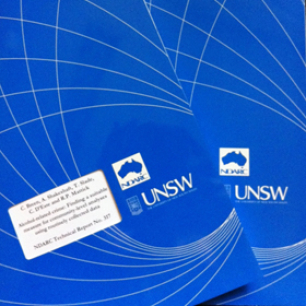NDARC Technical Report No. 160 (2003)
EXECUTIVE SUMMARY
This report reviews the literature on the effectiveness of internet-based substance use interventions, and assesses feasibility of developing such an intervention is Australia. The review includes an examination of relevant related literature on the efficacy of computerbased interventions for mental health and behavioural problems.
The internet marries computing and telecommunication technology to produce a unique communication channel. It combines attributes of mass communication (e.g. broad reach) with attributes of interpersonal communication (e.g. interactivity). This combination may make the internet an effective means of delivering behavioural interventions on a far wider scale than previously possible.
Internet-based interventions have a number of potential advantages over traditional interventions including a high level of convenience for the user (24/7 a vailability) and being non location-specific (can be accessed from anywhere). Intervention software is completely consistent in its treatment delivery, and there is some evidence that people more readily disclose sensitive information in a computer assessment than in a one-toone interview. After initial capital outlay, it may also be cost efficient.
The public health impact of alcohol, tobacco, and illicit drug use is substantial and well documented. It is estimated that 7.7% of Australian adults (or approximately 1,041,000 individuals) had a substance use disorder in the past 12 months. One in three (34.4.%) of people aged 14 and over used alcohol in a way that put them at risk of short-term harm at least once in the past 12 months. Frequent episodes of high risk alcohol use is most common among people with 15% drinking a levels which risk short-term harm at least weekly.
Despite high levels of substance use rates of treatment seeking and access to services are relatively low, which may indicate a level of unmet need. Internet-based services could provide a contribution to “broadening the base” of intervention by forming part of a stepped care model. Given the rapid uptake of the internet in Australia (over 72% aged 16 or over have access, and 87% of school age children have access), it provides an opportunity for broad dissemination of interventions for substance use problems.
A number of studies have investigated the efficacy of interventions for a range of mental health and behavioural conditions delivered by stand-alone computer (i.e. nonnetworked).Typically these interventions are developed for specific clients groups and are based on cognitive and/or behavioural treatment principles which lend themselves to computer implementation due to their well-defined and systematic approach. Despite considerable variability among the studies, generally positive outcomes have been reported in the treatment of depression, anxiety, specific phobias, panic disorder, and obsessive compulsive disorder. These studies provide some supporting evidence of the feasibility, acceptability and effectiveness of the computer-delivered treatment paradigm.
The therapeutic potential of internet-delivered intervention has been widely reported but less frequently rigorously investigated. Positive results have been reported but the evidence from the general internet-based intervention literature is less clear, with many studies involving small sample sizes, lacking control groups, or having high drop-out rates. These studies have, however, been successful in attracting users to the intervention to begin with, and the evaluation data reported generally indicate client satisfaction with the mode of treatment and, in particular, its convenience of access. This is consistent with the notion that the internet is a viable medium by which to deliver treatment.
With regard to internet-based substance use interventions, there is a very clear gap in the literature: outcome measurement. While studies have demonstrated the existence of a sizable demand for internet based interventions, little has been done to examine their efficacy in leading to changes in substance use behaviour. Such research is essential to identify the most effective elements of interventions, to identify who may most benefit from participation in an online intervention, and to ensure the efficient use of resources.
The currently available online substance use interventions vary tremendously in quality and complexity. The majority focus on alcohol or tobacco use, with very few interactive resources for other drug use. Many sites offer some sort of “self-test” involving screening and feedback. The better quality sites (e.g. http://www.stop-tabac.ch) provide theory-driven and evidence-based approaches to treatment, but nonetheless they remain unevaluated.
In summary, while the literature on internet based substance use interventions is sparse and flawed, the potential impact of effective intervention is huge. On the basis of the limited research available, and arguing by analogy from the computer based and general internet intervention literature, it seems reasonable to suggest that a demand for intervention in Australia probably exists and there is a good likelihood that such an intervention model would be effective. A pragmatic first step would be to develop and implement a trial of an internet-based brief intervention based on best practice intervention principles for alcohol tobacco and cannabis-related disorders. Following this phase, the efficacy of this model should be subjected to a randomised controlled trial.
Citation: Martin, G. and Copeland, J. (2003) Web-based susbtance use intervention: Literature review and assessment of feasibility in Australia, Sydney: National Drug and Alcohol Research Centre.


